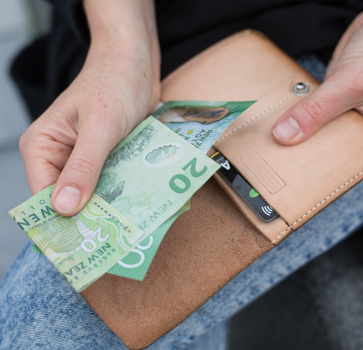When you can’t pay your debts: Bankruptcy and other options
The no-asset procedure
What is the no-asset procedure?
Insolvency Act 2006, ss 377, Part 5, subpart 4
The no-asset procedure is an alternative to bankruptcy. The procedure gives you protection from creditors that is similar to bankruptcy. When you enter a no-asset procedure, most of your debts are cleared. The people or organisations you owe money to (“creditors”) don’t get paid anything.
However, a no-asset procedure is a one-off opportunity. You cannot use it more than once and your debts must be less than $50,000. It usually lasts 12 months instead of the normal three year period for bankruptcy.
Who can apply for the no-asset procedure?
You can apply to enter a no-asset procedure if you:
- have no property you can sell to make money (“no realisable assets”) – this is everything you own except a motor vehicle up to a value of $6,500, tools for work, and essential personal and household effects
- have never been through the no-asset procedure
- have never been bankrupt
- have debts of between $1,000 and $50,000 (not counting your student loan, maintenance owing under the Family Proceedings Act and child support owing under the Child Support Act)
- cannot repay any of your debts
- any of your creditors would not receive much more if you were made bankrupt instead.
You cannot apply if:
- you have hidden assets with the intention of defrauding creditors (it is important you are honest about everything you own)
- you incurred a debt (i.e., owed people money) knowing that you won’t be able to pay
- a person or organisation you own money to (a creditor) objects
- a creditor has begun the process to put you into bankruptcy, and it is likely that it will be better for the creditor that you are made bankrupt instead (see: “How does a person become bankrupt”).
How do I apply for the no-asset procedure?
You can apply for the no-asset procedure by filing an application and a statement of affairs with the Official Assignee. This can be done on the New Zealand Insolvency and Trustee website, by clicking on “No Asset Procedures” and “How to Apply”.
What are the advantages of the no-asset procedure?
Insolvency Act 2006, ss 369, 377
Most of your unsecured debts are wiped. Unlike bankruptcy, this does not include a student loan.
The procedure usually lasts for a period of 12 months. By comparison, bankruptcy usually lasts for three years.
What are the disadvantages of the no-asset procedure?
Insolvency Act 2006, ss 366–371
You still have to pay certain debts – court fines, child support, maintenance orders, student loans and debts with secured creditors.
You cannot get credit, borrow money or enter into a hire purchase agreement more than $1,000 without first informing the credit provider that the debtor is subject to the no-asset procedure. Between applying and becoming subject to the no-asset procedure, the limit is $100.
Your name will be published in their local newspaper and the New Zealand Gazette and is also recorded on a public register on the Insolvency and Trustee Service website.

